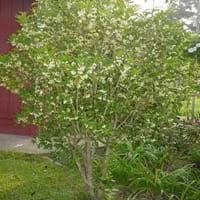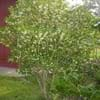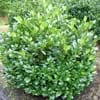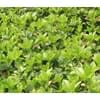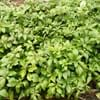What is
Life Span
Perennial
Perennial
Type
Broadleaf Evergreen
Tree
Origin
Asia, Nepal, China, Japan, Korea
North America, United States, Northeastern United States, Mid-Atlantic United States, Southeastern United States, North-Central United States, Central United States, South-Central United States, Canada
Types
Apricot Gold, Butter Yellow, Orange Supreme, Dan
Autumn Flame, October Brilliance, Tiliford
Habitat
Dappled Shade, Woodland Garden Canopy
Forests, Wide range of ecological site
USDA Hardiness Zone
6-11
3-9
AHS Heat Zone
12 - 8
9-1
Sunset Zone
21,22
A2, A3, 1a, 1b, 2a, 2b, 3a, 3b, 4, 5, 6, 7, 8, 9, 14, 15, 16, 17
Habit
Upright/Erect
Oval or Rounded
Information
Plant Size
Minimum Height
30.00 cm
99+
1,220.00 cm
33
Minimum Width
180.00 cm
99+
1,220.00 cm
14
Plant Color
Flower Color
White, Orange
Red
Flower Color Modifier
Bicolor
Bicolor
Fruit Color
Blue, Black
Red, Green, Brown
Leaf Color in Spring
Green, Dark Green
Light Green
Leaf Color in Summer
Dark Green
Green, Dark Green
Leaf Color in Fall
Dark Green
Yellow, Red, Orange, Yellow green, Gold, Dark Red, Orange Red
Leaf Color in Winter
Dark Green
Not Available
Shape
Leaf Shape
Oval, Finely Dentate
Maple shaped
Thorns
No
No
Season
Plant Season
Spring, Summer, Fall, Winter
Spring, Summer, Fall
Growing Conditions
Sunlight
Full Sun, Partial Sun, Partial shade
Full Sun, Partial Sun
Growth Rate
Medium
Medium
Type of Soil
Clay, Loam, Sand
Clay, Loam, Sand
The pH of Soil
Acidic, Neutral
Acidic, Neutral, Alkaline
Soil Drainage
Well drained
Average
Bloom Time
Spring, Late Spring, Early Fall, Fall
Early Spring, Spring
Repeat Bloomer
Yes
No
Tolerances
Not Available
Wet Site, Soil Compaction
Care
Where to Plant?
Container, Ground, Pot
Ground
How to Plant?
Semi-hardwood cuttings
Seedlings, Vegetative Reproduction
Plant Maintenance
Medium
Medium
Watering Plants
Watering Requirements
Average Water Needs
Water Deeply, Water when top layer of soil becomes dry
In Summer
Lots of watering
Lots of watering
In Spring
Moderate
Moderate
In Winter
Average Water
Average Water
Soil
Soil pH
Acidic, Neutral
Acidic, Neutral, Alkaline
Soil Type
Clay, Loam, Sand
Clay, Loam, Sand
Soil Drainage Capacity
Well drained
Average
Sun Exposure
Full Sun, Partial Sun, Partial shade
Full Sun, Partial Sun
Pruning
Remove no more than one-third of each branch
Remove dead branches, Remove dead leaves
Fertilizers
All-purpose dry fertilizer
General garden fertilizer, No need to fertilize every year
Pests and Diseases
Not Available
Anthracnose, Bleeding canker, Decline, Fomes root rot, Ganoderma root rot, Laetiporus root rot, Leaf spot, Powdery mildew, Tar spot, Verticillium Wilt
Plant Tolerance
Drought
Soil Compaction, Wet Site
Facts
Flowers
Showy
Insignificant
Flower Petal Number
Single
Single
Fruits
Showy Fruit
No
No
Edible Fruit
No
No
Fragrance
Fragrant Flower
Yes
No
Fragrant Fruit
No
No
Fragrant Leaf
No
No
Fragrant Bark/Stem
No
No
Showy Foliage
No
Yes
Showy Bark
No
Yes
Foliage Texture
Medium
Medium
Foliage Sheen
Glossy
Matte
Evergreen
No
No
Invasive
No
No
Self-Sowing
No
Yes
Attracts
Nematodes
Not Available
Allergy
Not Available
breathing problems, Eczema, flushing of face, Hives, Low blood pressure, Oral cavity, Rapid Heartbeat, Runny nose, Watery eyes
Benefits
Uses
Aesthetic Uses
Beautification, Showy Purposes
Showy Purposes
Beauty Benefits
Good for skin and hair
Not Available
Edible Uses
Yes
Yes
Environmental Uses
Air purification
Air purification, Wildlife
Plant Benefits
Medicinal Uses
Antitussive
Not Available
Part of Plant Used
Bark, Flowers, Fruits, Stem
Whole plant
Other Uses
Used as essential oil, Used as insect repellent, Used in herbal medicines, Used in tea, wine and sweet dishes
Edible syrup, Used as Ornamental plant
Used As Indoor Plant
Yes
Yes
Used As Outdoor Plant
Yes
Yes
Garden Design
Container, Feature Plant, Hedges, Houseplant, Mixed Border, Screening, Wind Break, Topiary, Bonsai, Espalier
Feature Plant, Shade Trees, Street Trees
Scientific Name
Botanical Name
OSMANTHUS fragrans
ACER rubrum
Common Name
Sweet olive, Sweet osmanthus, Tea olive
Northern Red Maple, Red Maple
In Hindi
Sweet Olive
लाल मेपल के पेड़
In German
Sweet Olive
Red Maple Tree
In French
Olive douce
Red Maple Tree
In Spanish
Oliva dulce
Árbol de arce rojo
In Greek
γλυκό Ελιά
Red Maple Tree
In Portuguese
Olive doce
Árvore de bordo vermelho
In Polish
słodki Olive
Red Maple Tree
In Latin
Dulce Olive
Rubrum Maple ligno
Classification
Kingdom
Plantae
Plantae
Phylum
Magnoliophyta
Magnoliophyta
Class
Magnoliopsida
Magnoliopsida
Order
Scrophulariales
Sapindales
Family
Oleaceae
Aceraceae
Genus
Osmanthus
Acer
Clade
Angiosperms, Asterids, Eudicots
Angiosperms, Eudicots, Rosids
Tribe
Oleeae
Not Available
Subfamily
Not Available
Not Available
Number of Species
15
99+
Not Available
|
||
|
||
|
